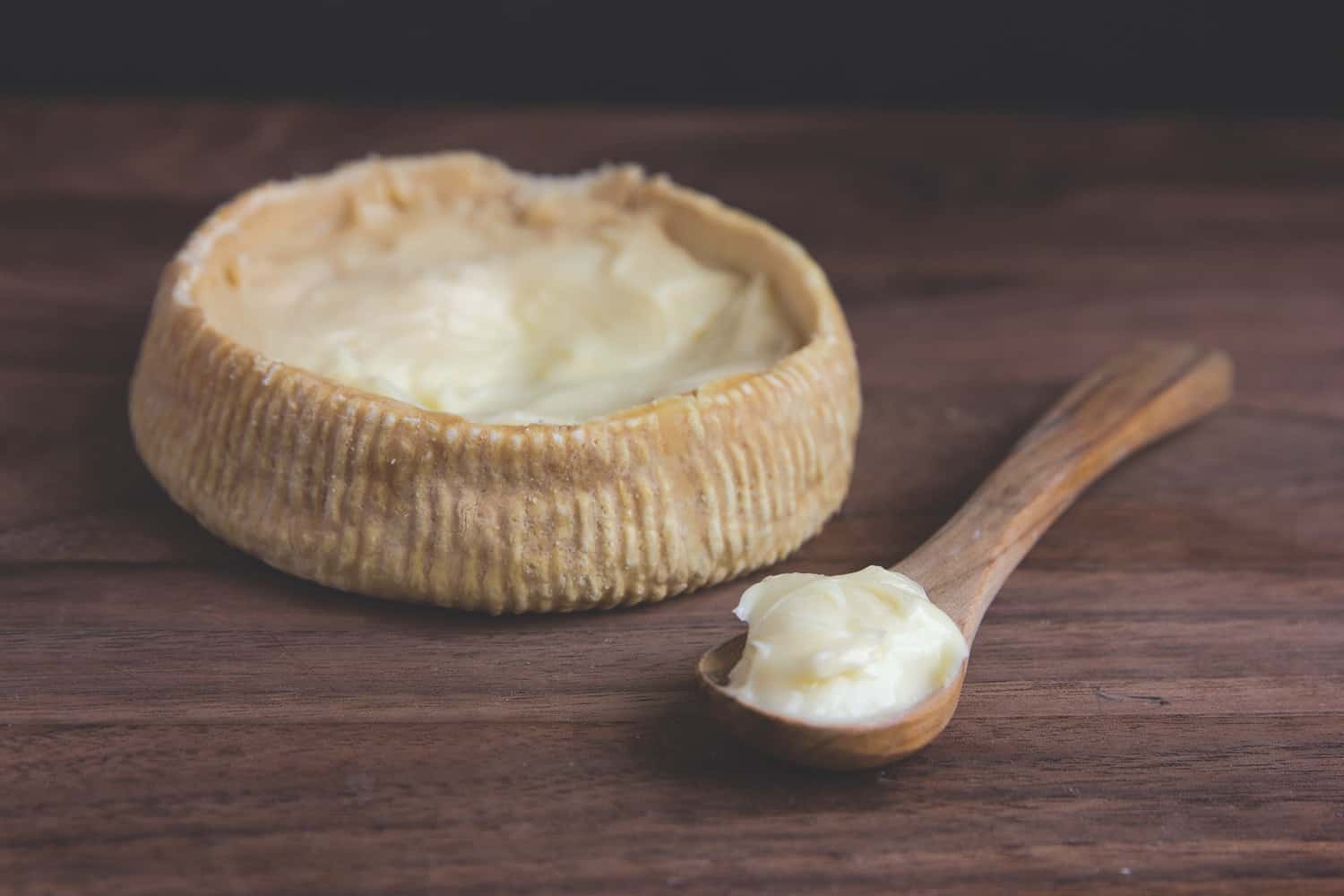
![]() One of the most pervasive myths in the cheese-eating community is that all soft and runny cheeses are very fatty. This just isn’t the case, and to understand why we must first consider what cheese is made of.
One of the most pervasive myths in the cheese-eating community is that all soft and runny cheeses are very fatty. This just isn’t the case, and to understand why we must first consider what cheese is made of.
In the simplest terms, cheese consists of three major components—water, protein, and fat. The protein component is usually entirely casein protein, which gives cheese its structure and texture. You can think of this as a protein “sponge.”
Embedded in this sponge are fat globules and water. The ratio of these three components varies drastically depending on the type of cheese in question. The cheesemaker determines the final amount of each of these three components by altering the initial milk and tailoring the cheesemaking process to the type of cheese desired.
For example, an aged cheddar can be about 35 percent fat, 30 percent protein, and 35 percent water, whereas a creamy Brie could be 30 percent fat, 20 percent protein, and 50 percent water. Looking at these numbers, we can see that the most striking difference is the water content. Brie has remarkably more water per ounce than cheddar, while it has less protein and fat overall. Aha! We can now start to see why Brie might be so creamy—all that water “dilutes” the cheese into a soft molten puddle. Or to continue our previous metaphor, a sopping wet sponge is much softer than a dry sponge. The fat is along for the ride and contributes in small part to the distinctive texture, as do minor components such as minerals and salt. Some soft cheeses like mascarpone and cream cheese do indeed have higher fat contents, mostly because they start their lives as cream and not milk. But Brie, Camembert, Taleggio, and the like are not actually as fat-filled as myth would have us believe.




